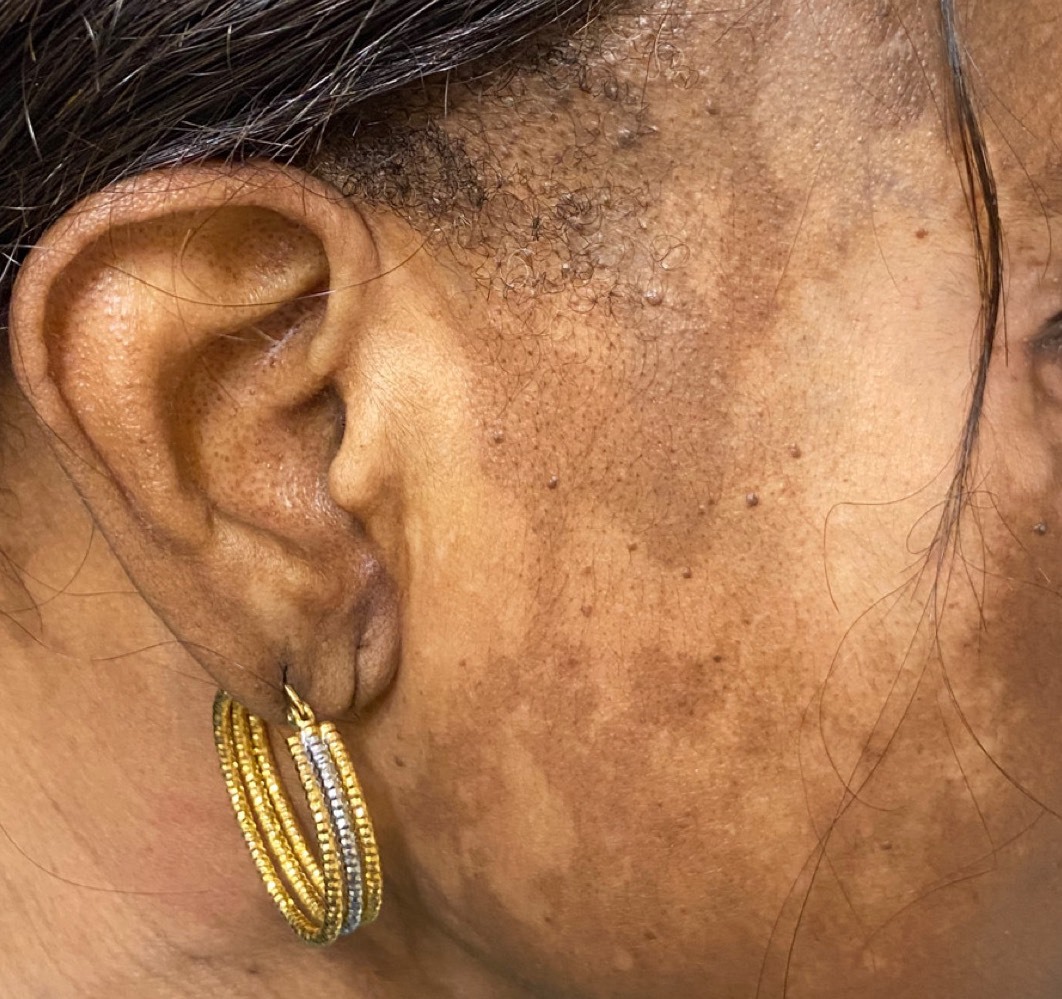New
A rare case of vitiligo onset following COVID-19 vaccination
The COVID-19 mRNA vaccines not only provide remarkable protection but also have been characterized by an overall safe and well-tolerated side effect profile. To date, several registry reviews and case series have documented cutaneous vaccine reactions, most commonly local injection reactions, coined “COVID Arm”.
Dr. Kaminetsky and Dr. Rudikoff report the first case of vitiligo following vaccination with the Moderna vaccine. A 61-year-old woman presented to the clinic three days after her second dose of the Moderna (mRNA-1273) COVID-19 vaccine. Several days after her first dose, the patient noted very faint hypopigmented macules on her anterior neck, but she did not seek treatment. After her second dose, these macules progressed in size and degree of hypopigmentation, and she developed new and more widespread macules on other parts of her body. The patient reported no personal nor family history of vitiligo, autoimmune disease, and no other pigmentary disorders. She had no comorbid health conditions, nor took any medications. No treatment had been attempted prior to the presentation. Examination revealed Fitzpatrick type V skin with widespread depigmented macules on the face, neck, chest, and abdomen. She was prescribed a topical calcineurin inhibitor and started on a phototherapy regimen.
While no mechanistic explanation has been characterized that can definitively implicate the vaccine as the cause of the vitiligo, the temporal association and lack of a more plausible explanation seem to indicate that vaccine was, at least in part, contributory. There have been other instances of autoimmune phenomena manifesting after COVID-19 vaccination, such as immune thrombocytopenic purpura, a phenomenon in which platelets are targeted by the immune system for destruction, much like melanocytes in vitiligo. Given the potent immune response generated by the COVID-19 vaccines, one can speculate that other unintended alterations in a vaccinated individual's immune milieu can occur. Other cells, like melanocytes in the case of vitiligo, may become inadvertent targets of the antibodies and immune cells newly generated and galvanized by the vaccine.

FAQOther Questions
- Can chemicals cause vitiligo?
Certain chemicals can trigger vitiligo, leading to a condition known as chemical-induced vitiligo. While clinically and histologically indistinguishable from other types of viti...
- Red Wine and Vitiligo
Recent research has revealed intriguing findings about the potential protective effects of red wine against vitiligo, using a genetic approach to study health outcomes. Red Win...
- Does vitiligo increase the risk of skin cancer?
No, it does not. Despite common misconceptions, people with vitiligo are actually at a lower risk of developing skin cancer—including both nonmelanoma skin cancer (NMSC) and mal...
Though it is not always easy to treat vitiligo, there is much to be gained by clearly understanding the diagnosis, the future implications, treatment options and their outcomes.
Many people deal with vitiligo while remaining in the public eye, maintaining a positive outlook, and having a successful career.
Copyright (C) Bodolóczki JúliaBy taking a little time to fill in the anonymous questionnaire, you can help researchers better understand and fight vitiligo.
